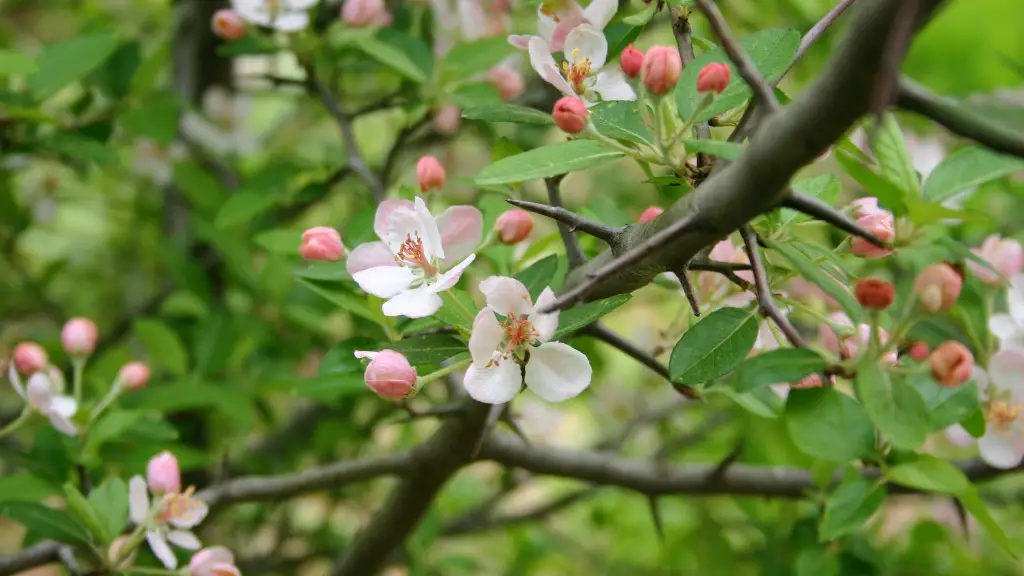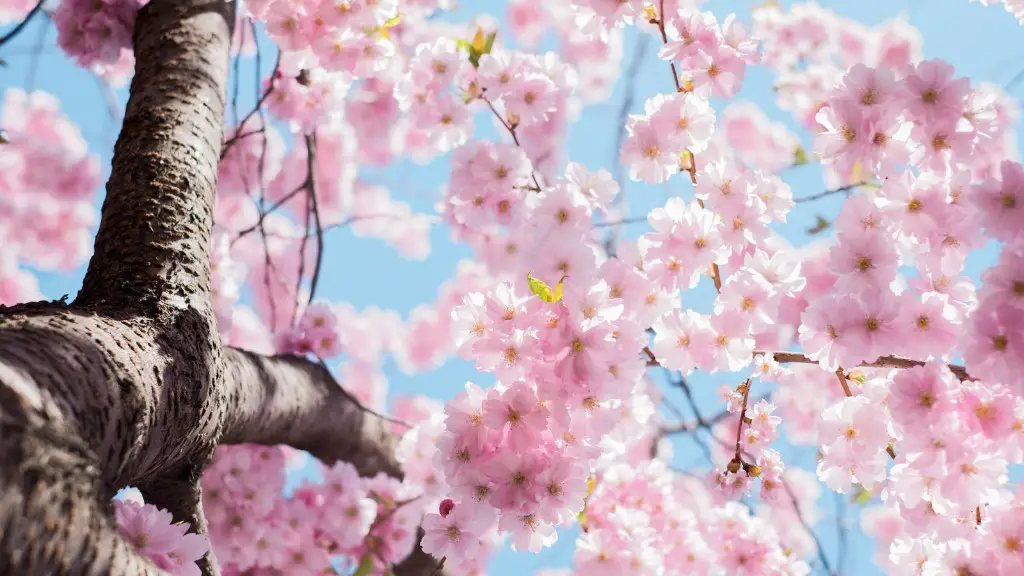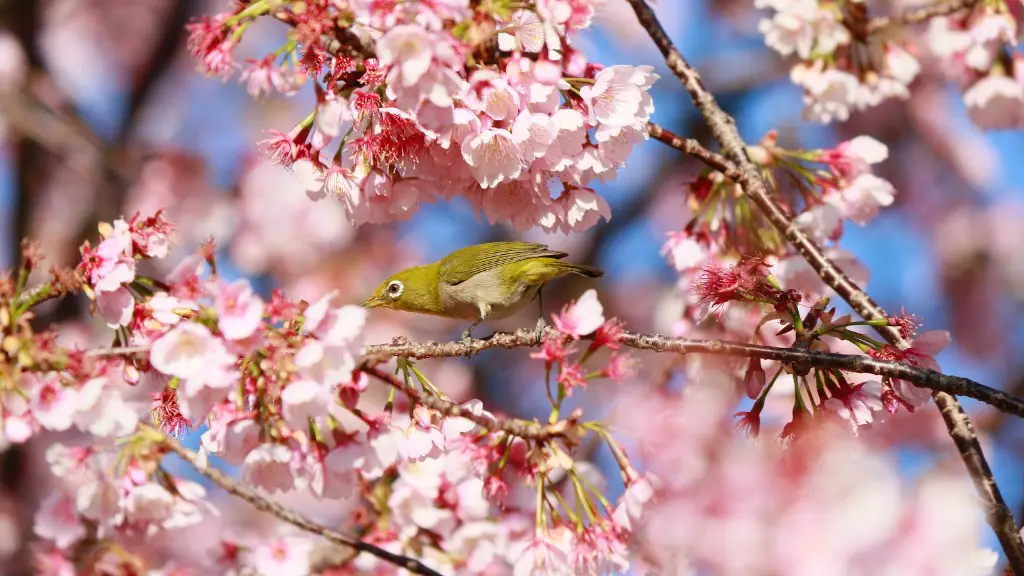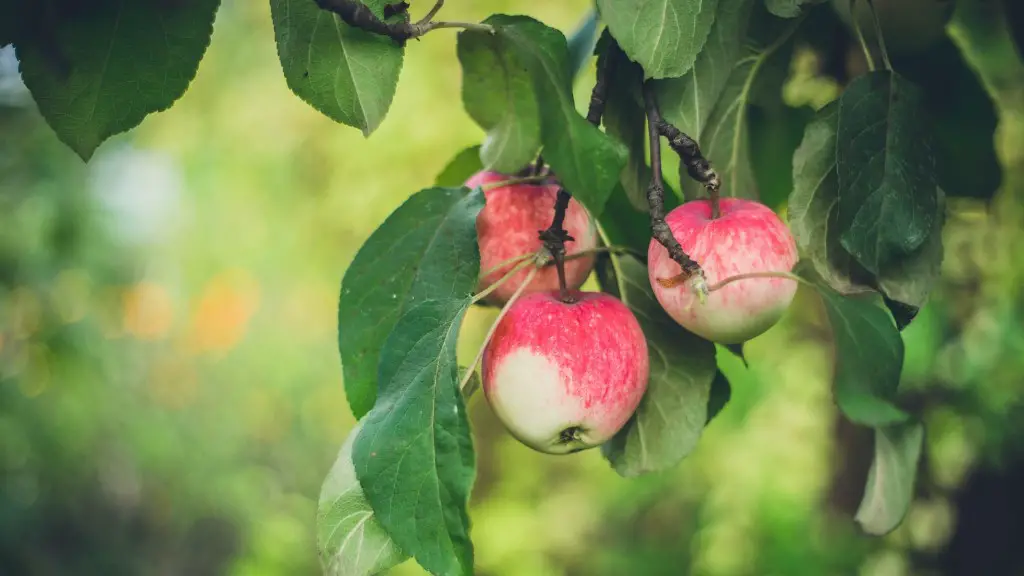Watering an apple tree is an important part of a successful, fruitful harvest. Poorly watered apple trees will produce fewer apples, or, worse yet, no apples at all. Fortunately, apple trees are relatively easy to water, and there is a basic regimen that will ensure a good, healthy crop. Here is how to properly water an apple tree.
First, create a watering routine that you will stick to. This means having an automatic irrigation system installed, or a program with daily, weekly, or monthly watering. This will provide the tree with a consistent supply of water and will help you stick to a routine.
Second, be sure that the water you are using is properly filtered or treated. Apple trees require clean water and should not be watered with anything that is contaminated or chemically treated. If you are using untreated water, you may want to invest in a filtration system or water softener to avoid damage to the tree’s root system.
Third, determine the types of fertilizer that should be used. Fertilizer can help a tree grow more apples by providing the necessary nutrients, but it must be used properly. If a tree is not getting enough nitrogen, for example, it will not produce as many apples. On the other hand, too much fertilizer can cause an imbalance in the tree’s root system, which will result in fewer apples.
Fourth, assess the soil moisture. As part of your watering routine, it is important to test the soil regularly to determine whether the tree needs more water or not. This can be done with a soil moisture meter, a tool that measures how much moisture is in the soil. If the soil is too dry, then it is time to water the tree.
Finally, adjust the amount of water applied to the tree depending on the weather. In hot and dry temperatures, more water may be needed to keep the tree healthy and produce a bountiful harvest. On the other hand, in cooler, wetter climates, less water may be needed as rain will provide much of the necessary moisture.
Soil Type and Nutrient Requirements
Apples trees have specific soil requirements and will not grow well in all soil types. Sandy soils are an ideal environment for the trees, as the sandy soil retains moisture and allows the roots to spread more freely. Clay soils, however, have a higher density, which can limit the ability of the roots to take up water. If planting an apple tree in a clay soil, it is important to loosen the soil and add compost or other organic matter to help retain moisture and create space for the roots to grow.
The type of nutrients in the soil will influence how the tree grows and the size of the apples it produces. The key macronutrients are nitrogen, phosphorus, and potassium, but other micronutrients, such as calcium, magnesium, and iron, are also important. The type and amount of fertilizer should be determined based on a soil test by a professional.
Adequate fertilization is necessary to ensure that the apple tree produces healthy apples. If a tree gets too little fertilizer, it will produce fewer apples, whereas too much fertilizer can damage the tree’s root system and reduce fruit production. Fertilizing at least once or twice a year is recommended. Also, be sure to use the appropriate type and quantity of fertilizer for the particular type of apple tree.
High-quality, slow-release fertilizers are a good choice for apple trees, as they provide a steady supply of nutrients over the course of several weeks or months. When applying fertilizer, spread it evenly around the root zone and avoid overfertilizing, as this can damage the tree.
Mulching and Pruning
Mulching is an important step in the process of watering an apple tree. Mulch insulates the soil and helps retain moisture, as well as providing essential nutrients for the tree. The best type of mulch for apple trees is wood chips, such as pine or cedar chips, or even grass clippings. Spread the mulch in an even layer around the tree, making sure the roots are completely covered.
Pruning is another important element of apple tree care. Pruning removes branches that are dead, diseased, or damaged and helps promote the health of the tree. It is best to prune in the late winter or early spring, before bud break, to avoid hurting the tree’s fruit production. Pruning after bud break is not advised, as it may reduce fruit production. Pruning should also be done selectively and with care to ensure a good, healthy crop.
Apple trees need to be pruned regularly to keep them healthy and promote good, healthy growth. Pruning helps remove dead or diseased branches, which can help encourage the growth of larger apples. It is also important to prune branches that are crossing over each other and rubbing together, which can cause damage to the tree or reduce the quality of the apples.
Pruning should be done based on the shape and size of the tree. A central leader system is recommended for tall, upright trees, while an open center is best for smaller, bushier trees. This ensures that the tree has plenty of space to grow and that the apples are of the highest quality.
Disease and Pest Management
Disease and pests can have a devastating effect on apple trees, reducing fruit production and making the tree vulnerable to further damage. The best way to manage disease and pest problems is through preventive measures. This includes examining the tree regularly for signs of damage, such as discoloration, spots, or stunted growth, and taking action before the problem becomes too severe.
Good sanitation practices are also important for disease and pest management. This involves removing any diseased or pest-infested leaves, twigs, and fruit from the tree, as well as trimming away any dead or dying branches. Mulching and fertilizing can also help reduce the risk of disease or pest infestation.
If the tree is already showing signs of disease or pests, treating it with an appropriate fungicide or pesticide can help control the problem and protect the tree from further damage. Be sure to use these products according to the manufacturer’s instructions. Also, never use an insecticide or fungicide on a tree that has not been properly examined, as treating the wrong problem can do more harm than good.
In some cases, it may be necessary to bring in an arborist or professional tree service to assess the tree and recommend a course of action. They may suggest a pruning regimen or a systemic insecticide or fungicide to treat the tree. While their advice may involve a cost, it can save the tree in the long run.
Watering Frequency
Apple trees need to be watered on a regular basis. The frequency of watering will depend on the weather, the soil type, and the amount of rainfall, but typically an apple tree should be watered every 7-10 days during dry periods. This will help keep the tree’s roots healthy and hydrated, ensuring that the tree produces a good crop of apples.
When watering an apple tree, it is important to ensure that the whole root zone is thoroughly hydrated. This means soaking the tree with a deep, slow watering that reaches the entire root zone. Watering too quickly will not reach all of the roots and can lead to uneven growth and sparse fruit production.
If you are using an irrigation system, such as a drip line or sprinklers, be sure to program it to water the tree on the correct schedule. Over-watering can lead to root rot and damage the tree, while under-watering can cause the tree to become stressed and produce fewer apples. It is best to water the tree early in the morning to take advantage of the cooler temperatures and avoid evaporation.
Watering Techniques
In addition to watering frequency, different techniques can be used to water apple trees. Hand watering is the simplest and most economical method, but it can be time consuming, especially if you have several trees. A soaker hose can also be used to water several trees at once, as it delivers water slowly and evenly to the roots.
Drip irrigation is a more efficient option, as it delivers water directly to the tree’s roots at an adjustable rate. This type of irrigation system can be more expensive to set up, but it pays off in the long run with healthier trees and a larger harvest.
Rain barrels can also be used to water apple trees, as they provide a free source of water. Rain barrels should be regularly emptied and cleaned to avoid the build-up of leaves and debris that can lead to contamination. Be sure to use a coarse filter on the barrel to prevent small particles from entering the barrel.
Finally, mulching is an important part of apple tree care that can help the tree conserve moisture and reduce water loss from the soil. A thin layer of organic mulch around the base of the tree can help retain moisture in the soil and reduce the amount of water needed for the tree.





